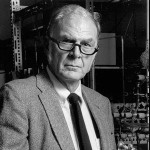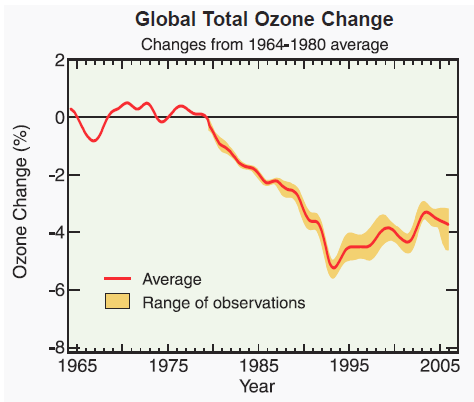F. Sherwood Rowland, one of the world’s greatest environmental heroes, passed away last weekend at the age of 84. Rowland worked in the Physical Sciences Department at the University of California, Irvine, and was the first person to sound the alarm over the damaging effects of chlorofluorocarbons (CFCs) on the ozone layer.

F. Sherwood Rowland
In 1985, scientists studying the Earth’s stratosphere (the second closest atmospheric layer to the surface) realized that there was an unexpected absence of ozone over Antarctica, and that this hole in the ozone layer was increasing in size every year. Furthermore, they were baffled by the cause of its depletion. Ozone, or triatomic oxygen (O3), is of vital importance in our atmosphere because it prevents excess harmful ultraviolet radiation from reaching the Earth’s surface.
Rowland and postdoctoral student Mario Molina were able to show that CFCs, a chemical compound used in many aerosol sprays at the time, were interacting with and destroying ozone particles once the CFCs reached the stratosphere. It was a discovery that was challenged at first because of the previous notion that CFCs were inert and harmless, but it was quickly proven valid and eventually become a discovery that won Rowland a Nobel Prize in 1995.
When it was proven that CFCs were the main culprit of ozone depletion, the wheels went into action at once. The Montreal Protocol of 1987 halted the worldwide production of CFCs and enforced a series of CFC bans in every country in the world. The final ban went into effect in 2010 in third-world countries. The ozone layer has subsequently stopped shrinking, and is now well on its way to recovering.
Mental Floss magazine describes how “saving the ozone was literally the first thing the whole world ever agreed on.” Much can be learned from this unified worldwide collaboration to protect our delicate planet. In his last decade of work after receiving the Nobel Prize, Rowland went on to seek similar unified support for the stemming of global warming. At a White House climate change summit in 1997, he asked, “Isn’t it a responsibility of scientists, if you believe that you have found something that can affect the environment, isn’t it your responsibility to do something about it, enough so that action actually takes place?”
“If not us, who? If not now, when?”
Thus far it seems that it will take more than simple science to convince world leaders and fossil fuel proponents that humans are contributing to climate change and that something must be done, lest we commit damage that, this time around, cannot be undone.
References
“Ozone layer scientist who ‘saved the world’ dies.” The Guardian 12 Mar. 2012. Environment. 14 Mar. 2012 <http://www.guardian.co.uk/environment/2012/mar/12/ozone-layer-scientist-dies>
“What ever happened to the hole in the ozone layer?” Mental Floss. Jan. 2012: 45.


Comments are closed.